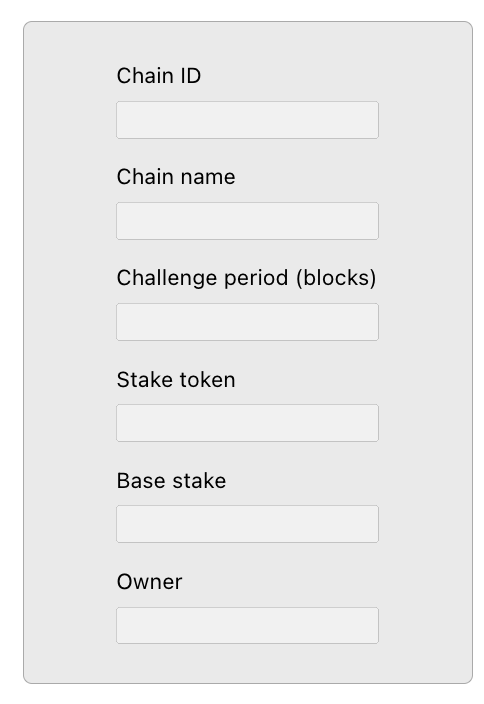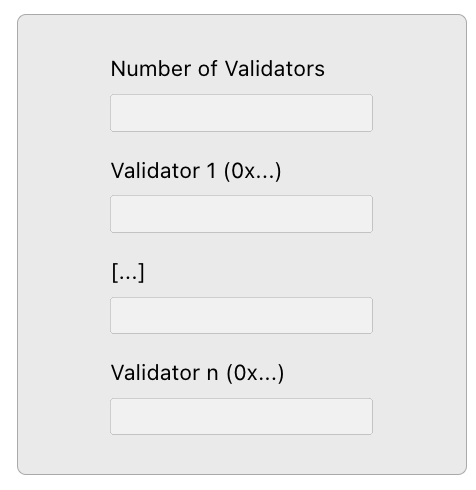How to Create your L3 on Arbitrum Orbit
More and more companies are choosing the OP stack to build their own chain. How is Arbitrum trying to attract projects to build on top of its tech stack?
L2s have dominated the narrative during this recent bear market with a handful of other niches.
Luckily they have given us some entertainment in these dire times.
We have often seen the term L2 wars, to symbolize the competition between Arbitrum and Optimism.
Before, this was a war to establish an essential infrastructure for L2s and gather an initial critical mass of protocols and users.
Now that they have established a ground layer and their protocols are thriving, the next step of this fictional war is for who will attract more projects to build on top of their stack.
With this regard Optimism has been closing one deal after another: first Coinbase with BASE and then Binance with OPBNB.
While Arbitrum seems to have taken the crown as the home of DeFi, more and more companies are choosing the OP stack to build their own chain.
Is Optimism winning this race?
How is Arbitrum trying to attract projects to build on top of its tech stack?
Enters Arbitrum Orbit.
Revolving around the Arbitrum Orbit
Arbitrum Orbit is part of the Arbitrum tech stack and allows any developer to easily and permissionless launch their own L3 ecosystem that settles on Arbitrum’s chains (One or Nova).
You can think of your Orbit chain as a self-managed priority lane on Ethereum.
What can you build on Orbit?
Depending on the customizations and requirements, devs can build:
Arbitrum L3 Rollups
Arbitrum AnyTrust Protocols
Tailored Chains for specific use cases
The choice between Rollup and AnyTrust represents a tradeoff between decentralization and performance.
Arbitrum Nova is an example of an AnyTrust protocol: it uses a data availability Committee (DAC) to store raw transaction data, expediting settlement and reducing costs by introducing a security assumption that relies on Arbitrum One.
Instead, Arbitrum One stores raw transaction data directly on Ethereum L1.
What’s interesting about the Orbit model Is the involvement of Arbitrum DAO Governance
While devs can always deploy any L3 permissionlessly, launching a new L2 chain using the Orbit stack directly on Ethereum need the approval of the Arbitrum DAO, which has discretion on whether to grant these licenses.
To allow even more customization, Arbitrum will soon release Stylus, which will allow developers to use non-EVM programming languages such as C++ and Rust.
How can you benefit from Orbit?
Offering Gas reliability thanks to dedicated throughout and isolation based on the performance required
Stylus: benefit from EVM compatibility
Independence from Arbitrum roadmap
Permissions: choose who can read and deploy data and smart contracts
Choose the token to collect fees
Account Abstraction / Transaction Fee Subsidization: contributing to further abstracting complexity and improving UX.
Customizable protocol settlement/execution/governance
Nitro: leverage Arbitrum Nitro code upgrades to stay updated in Ethereum scaling tech
DAC to settle tx faster and cheaper
Low MVP costs
Complete flexibility
How does Orbit help the wider Ethereum ecosystem?
Scalability: multiple chains and environments, each with dedicated and separate resource management — the division of work makes it easier to overcome bottlenecks.
Flexible Security: different chains may have different security tradeoffs (e.g. Arbitrum Nova having lower fees than One).
Flexible Execution: depending on requirements some Orbit chains may be EVM compatible, while some chains may have restricted smart contracts functionalities
Governance: tailored to specific needs
Increased Adoption: Orbit lowers the barriers to creating dApps
A Practical Guide to Creating an Orbit Chain
Users interested in creating a new chain can refer to the Orbit Quickstart guide.
Currently, it’s only possible to launch an Orbit chain settling to Goerli to prototype and experiment, not to a mainnet L2 chain.
Step 1: Get some Arbitrum Goerli $ETH ($AGOR)
Step 2: Configure the Orbit chain's deployment
From the dev. portal you can configure the parameters.
These are pretty much self-explanatory and include the number of blocks where nodes can have disputes as well as the chosen token and the amount that validators have to stake.
Step 3: Deploy your chain's base contracts to Arbitrum Goerli
Click the Deploy Rollup button located below the config form and the Orbit chain's base contracts will be deployed to its base chain (Arbitrum Goerli).
Step 4: Configure your chain's validator(s)
Using the Configure Validators section.
Step 5: Configure your chain's batch poster
..responsible for posting batches of transactions from your Orbit chain to its base contracts on its base chain.
The last few steps are quite technical but straightforward and are explained in the Orbit guide attached above.
Well, congrats you have just launched your Orbit chain!
Food for Thought
We are seeing the different approaches adopted between Optimism and Arbitrum in the way they attract projects to their ecosystem.
Arbitrum has lagged behind with its Orbit release, allowing Optimism to get some advantage in terms of attractiveness in the market.
Furthermore, the OP chain now will be able to leverage its existing network and partners for following integrations.
Arbitrum Orbit makes building an L3 on top of Arbitrum as easy as sending a few transactions.
There’s already speculation that a few projects might be building on Orbit…
Arbitrum has a thriving DeFi ecosystem and non-chain governance, will this be enough for projects to decide to build there?
Food for thought, my friends.










Nice.
Firstly, the definition of L2 and L3 is starting to become increasingly confusing and rather opaque. Can you help clarify?
Secondly, are DAC's as secure as we think they are if they do not outrightly verify the data? (food for thought)
Third, what are the security tradeoffs between ARB and OP (no fraud proof is a big one) and how does this compare to DYM, in your opinion?